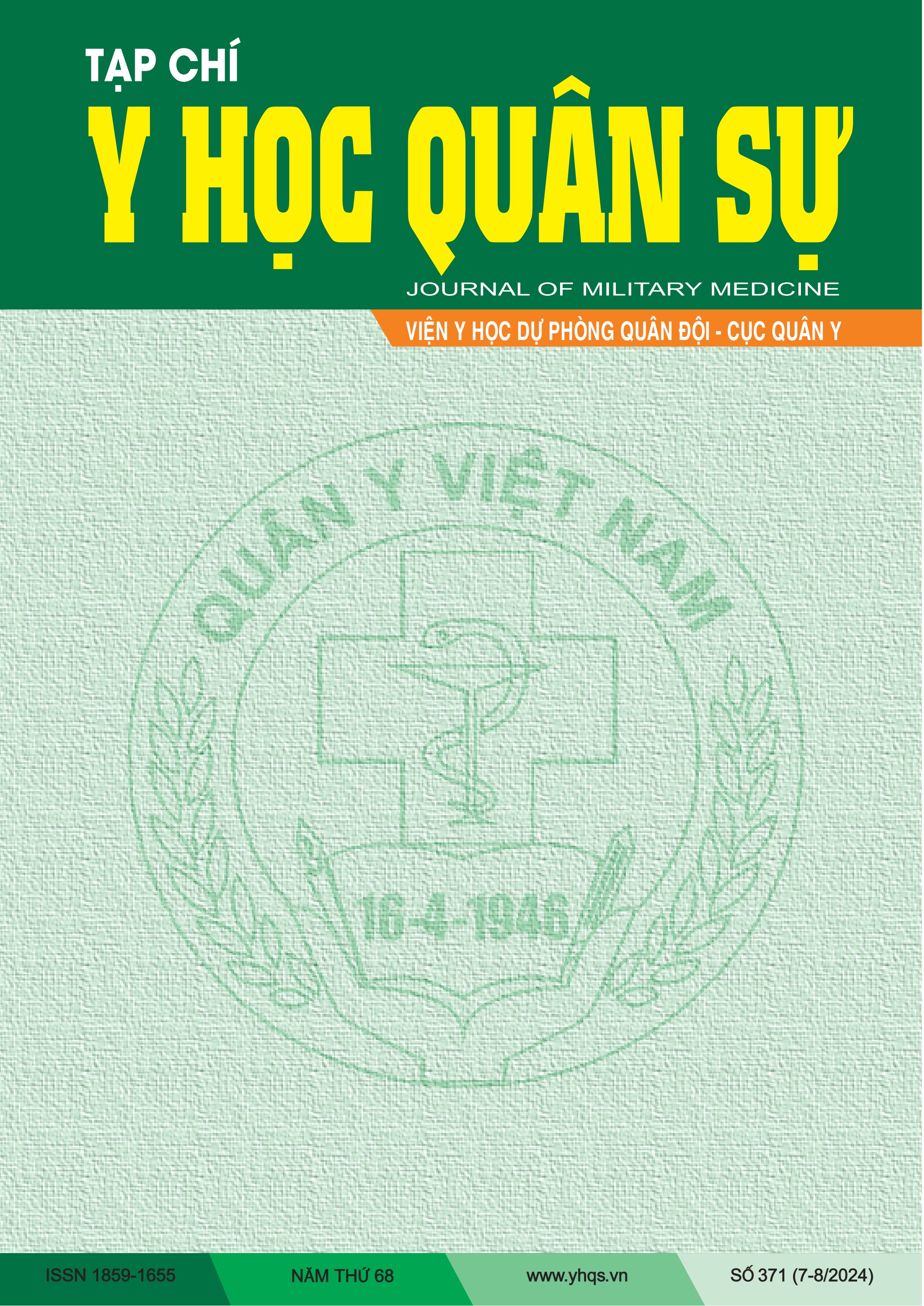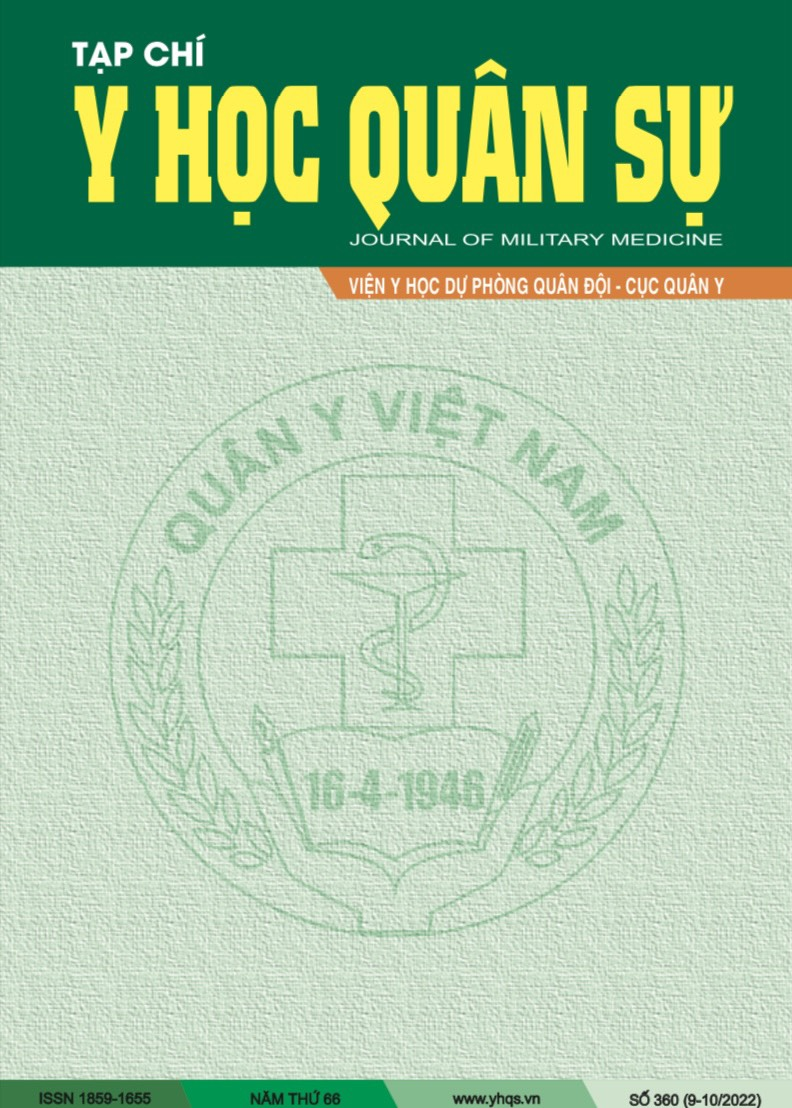NGHIÊN CỨU MỘT SỐ ĐIỀU KIỆN SINH TỔNG HỢP CELLULASE NGOẠI BÀO TỪ CHỦNG MIP_GN36 (XẠ KHUẨN Streptomyces thermocarboxydus) ỨNG DỤNG TRONG XỬ LÍ MÔI TRƯỜNG
DOI:
https://doi.org/10.59459/1859-1655/JMM.431Từ khóa:
Streptomyces thermocarboxydus, MIP_GN36, CellulaseTóm tắt
Mục tiêu: Xác định ảnh hưởng của nồng độ cơ chất cellulose, nhiệt độ, pH ban đầu, thời gian nuôi cấy đến khả năng sinh tổng hợp cellulase ngoại bào của chủng MIP_GN36 (xạ khuẩn Streptomyces thermocarboxydus).
Đối tượng, phương pháp: Streptomyces thermocarboxydus MIP_GN36 được hoạt hóa từ bộ sưu tập chủng vi sinh vật thuộc Khoa Vi sinh vật, Viện Y học dự phòng Quân đội. Xác định hoạt tính cellulase của chủng MIP_GN36 bằng phương pháp định lượng đường khử (theo Miller, 1959).
Kết quả: Điều kiện thích hợp để chủng xạ khuẩn MIP_GN36 sinh tổng hợp cellulase cao nhất gồm: ở nhiệt độ 45ºC; pH ban đầu 7,0; nồng độ cơ chất cellulose 1,5%; sau 120 giờ nuôi cấy hoạt tính enzyme là 22,5 U/mL. Đây là tiền đề cho các nghiên cứu tiếp theo để tạo chế phẩm vi sinh xử lí rác thải hữu cơ.
Tài liệu tham khảo
Yati Soeka et al. (2019), “Characterization of cellulase enzyme produced by two selected characterization of cellulase enzyme produced by 2 selected”, Makara Journal of Science, 23.
Chu Thanh Bình (2024), “Hoạt tính đối kháng với vi sinh vật gây bệnh cho người của chủng xạ khuẩn Streptomyces MIP_GN36 phân lập từ đất vùng rễ cây Gừng (Zingiber officinale)”, Tạp chí Y học Quân sự, Số 369, tr. 52-57.
K Tamura, G Stecher, D Peterson, A Filipski, S Kumar (2013), “MEGA6: molecular evolutionary genetics analisis version 6.0”, Molecular Biology and Evolution, 30(12), 2725-2729.
Miller G.L (1959), “Use of dinitrosalisylic acid reagent for determination of reducing sugars”, Anal Chem., 31: 426-428.
Wasana Suyotha et al. (2023), “Evaluation of the potential use of thermotolerant lignocellulolitic Streptomyces thermocarboxydus ME742 and the mutant MEEMS15-16 as inoculum for effective composting of wastes from palm oil mill”, Biocatalisis and Agricultural Biotechnology, 54.
Kano KASUGA et al. (2018), “Heterologous expression of Streptomyces cellulase genes for the molecular breeding of antibiotic producing Streptomycetes from cellulosic biomass”, Soc. Mater. Eng. Resour., 23 (2).
El-Naggar N.E.A, Abdelwahed N.A.M, Saber W.I.A, Mohamed A.A (2014), “Bioprocessing of some agro-industrial residues for endoglucanase production by the new subsp.; “Streptomyces albogriseolus” subsp. celluloliticus strain NEAEJ”, Brazilian Journal of Microbiology 45 (2): 743-756.
Chellapandi P, Jani H.M (2008), “Production of endoglucanase by the native strains of “Streptomyces” isolates in submerged fermentation”, Brazilian Journal of Microbiology, 39:122-127.
Yati Sudaryati Soeka (2019), “Characterization of cellulase enzyme produced by two selected strains of Streptomyces macrosporeus isolated from soil in Indonesia”, Makara Journal of Science, 65-71.
Lugani Y, Singla R, Sooch B.S (2015), “Optimization of cellulase production from newli isolated Bacillus sp. Y3”, J. Bioprocess Biotech., 5:11.
Chellapandi P, Jani H.M (2008), “Production of endoglucanase by the native strains of “Streptomyces” isolates in submerged fermentation”, Brazilian Journal of Microbiology 39:122-127.
Azzeddine B, Abdelaziz M, Estelle C, Mouloud K, Nawel B, Nabila B, Francis D, Said B (2013), “Optimization and partial characterization of endoglucanase produced by “Streptomyces” SP. B-PNG23”, Arch. Biol. Sci., Belgrade, 65 (2): 549-558.
Tải xuống
Đã Xuất bản
Cách trích dẫn
Số
Chuyên mục
Ngày xuất bản 19-08-2024



